United Visual Artists' meditative 'Momentum' installation swings into action at London's Barbican
Watch United Visual Artists' installation in motion in the Barbican's Curve gallery
United Visual Artists' 'Momentum' project comprises a series of 12 objects that slowly oscillate in the dark void of the Barbican Gallery's 90m long Curve space in London. The installation takes its cue from the idea of Foucault's pendulum - an instrument designed to visualise invisible forces, such as the Earth's rotation.
Every single part of the project - from the electronics to the mechanics - has been researched and custom-built by UVA over nine months. Each swinging element has its own 3D-printed acoustic-chamber, playing out a broad-textural soundtrack, and a light source that cuts a 360 degree plane through the smoke-filled void.
At first the modular system appears to swing in sync to the rhythm of a pendulum, holding the viewer in a state of suspended belief. However, every five minutes or so, small variations to the movement warp onlookers' perception. 'We can really play with time and slow things down very subtly,' says Matthew Clark, one of the founding members of UVA. 'We have absolute control over the mechanics.'
Momentum is about exploring the tension between synthesised and natural movement. But in the words of UVA-designer Ben Kreukniet: 'Physics doesn't like it when you try and take control.' And in the rafters of the Curve, a hidden battle with gravity takes place - where a system of 30kg counterweights, on two axes of rotation, utilise motors that can push and pull each element into place - an engineering project many firms 'wouldn't touch'.
The lean, entirely functional one kilo objects have a beauty of their own, but the near-formless space they define - through an array of light and managed Doppler-effects - becomes the artwork viewers can't ignore. 'We're constantly bombarded with visual noise,' says Clark. 'So we just want to create a place where, for a certain amount of time, people can lose themselves in a moment.'

Each moving element of 'Momentum' has its own 3D-printed acoustic-chamber, playing out a broad-textural soundtrack, and a light source that cuts a 360 degree plane through the smoke-filled void.

The project takes its cue from the idea of Foucault's pendulum - an instrument designed to visualise invisible forces, such as the Earth's rotation
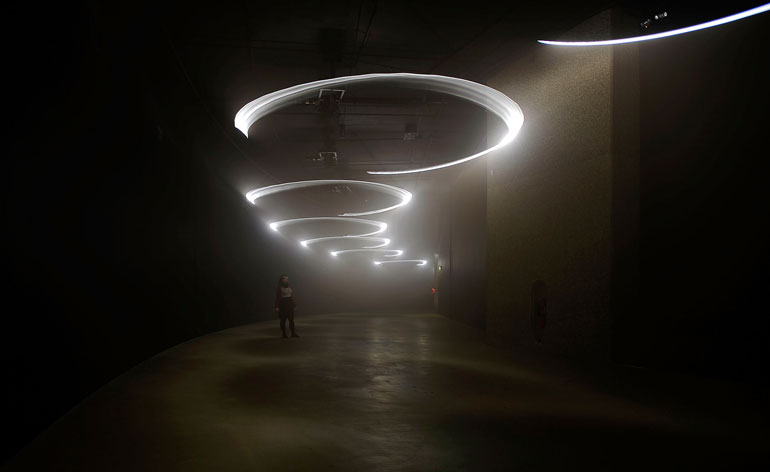
Every single part of the project - from the electronics to the mechanics - has been researched and custom-built by UVA over nine months
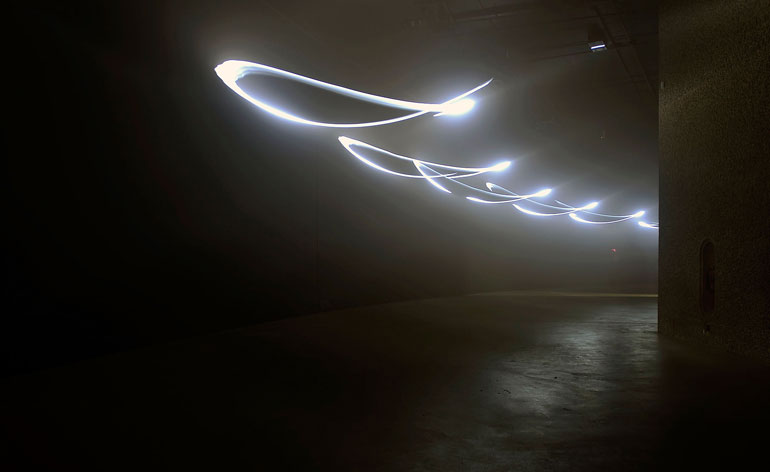
At first the modular system appears to swing in sync to the rhythm of a pendulum, holding the viewer in a state of suspended belief. However, every five minutes or so, small variations to the movement warp onlookers' perception

'We can really play with time and slow things down very subtly,' says Matthew Clark, one of the founding members of UVA. 'We have absolute control over the mechanics'
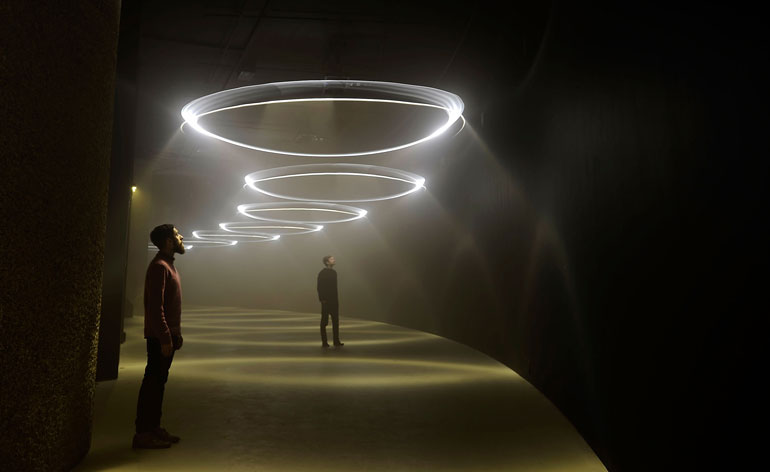
The concept is about exploring the tension between synthesised and natural movement. In the rafters of the Curve, a hidden battle with gravity takes place - where a system of 30kg counterweights on two axes of rotation, utilise motors that can push and pull each element into place - an engineering project many firms 'wouldn't touch'
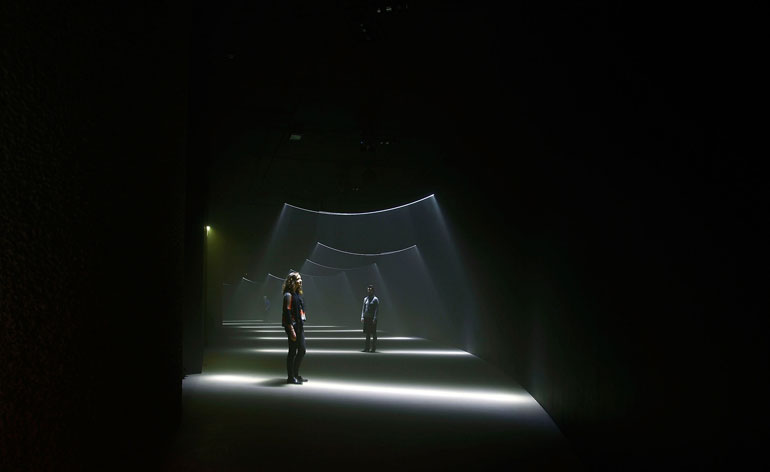
The lean, entirely functional one kilo objects, have a beauty of their own, but the near-formless space they define - through an array of light and managed Doppler-effects - becomes the artwork viewers can't ignore
ADDRESS
Barbican Centre
Silk Street
London EC2Y 8DS
Wallpaper* Newsletter
Receive our daily digest of inspiration, escapism and design stories from around the world direct to your inbox.
-
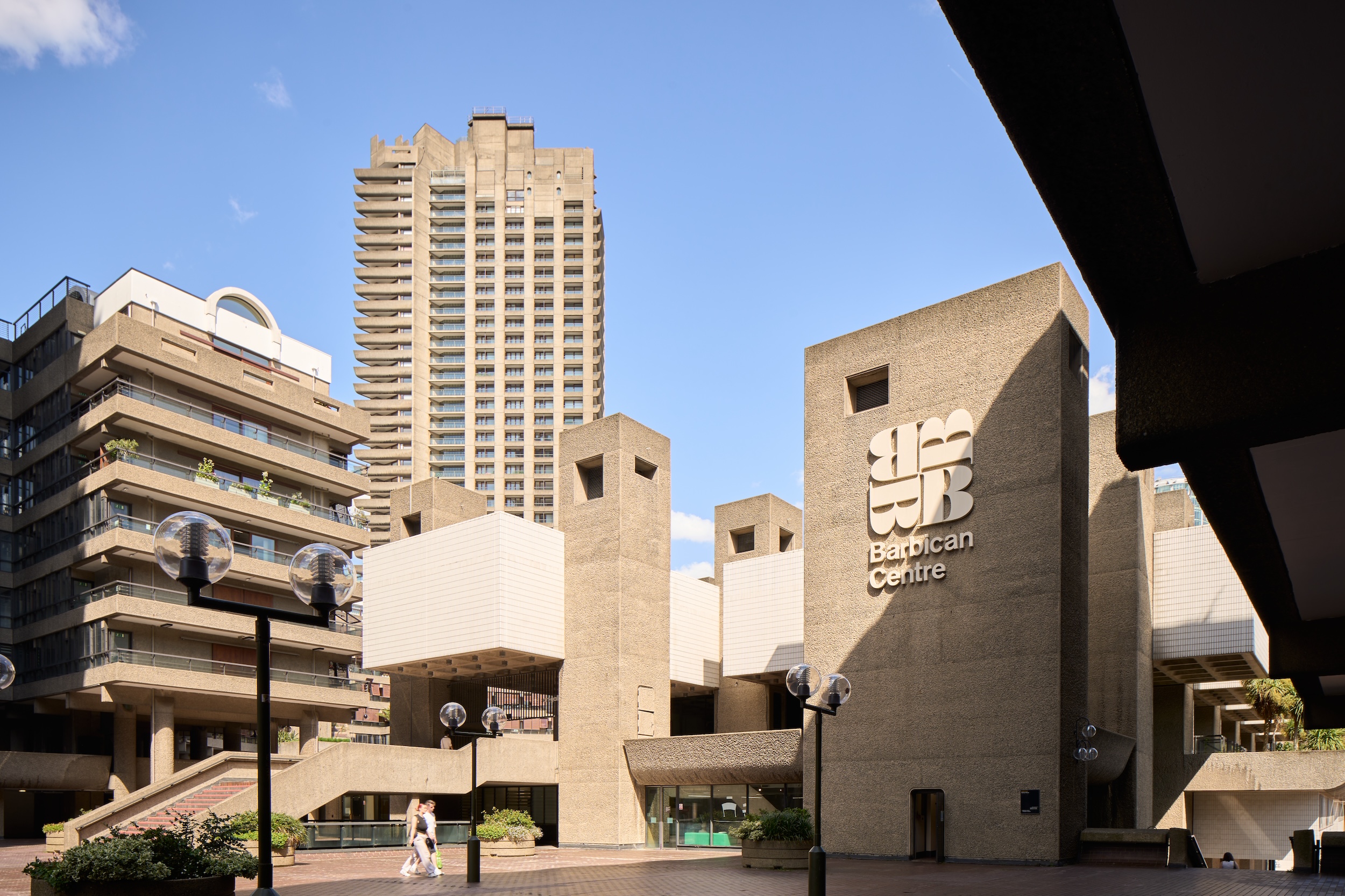 Warp Records announces its first event in over a decade at the Barbican
Warp Records announces its first event in over a decade at the Barbican‘A Warp Happening,' landing 14 June, is guaranteed to be an epic day out
By Tianna Williams
-
 Cure your ‘beauty burnout’ with Kindred Black’s artisanal glassware
Cure your ‘beauty burnout’ with Kindred Black’s artisanal glasswareDoes a cure for ‘beauty burnout’ lie in bespoke design? The founders of Kindred Black think so. Here, they talk Wallpaper* through the brand’s latest made-to-order venture
By India Birgitta Jarvis
-
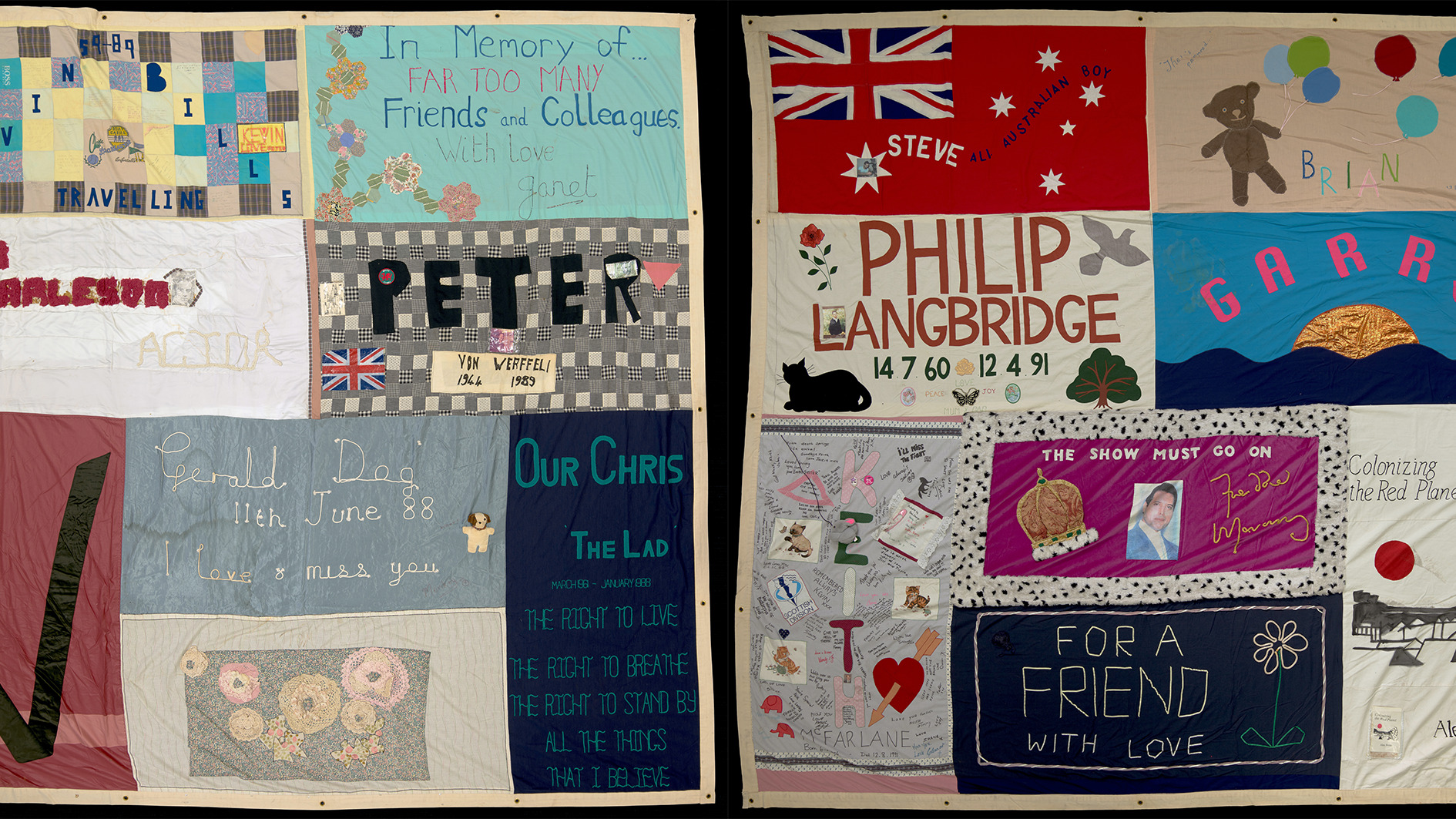 The UK AIDS Memorial Quilt will be shown at Tate Modern
The UK AIDS Memorial Quilt will be shown at Tate ModernThe 42-panel quilt, which commemorates those affected by HIV and AIDS, will be displayed in Tate Modern’s Turbine Hall in June 2025
By Anna Solomon
-
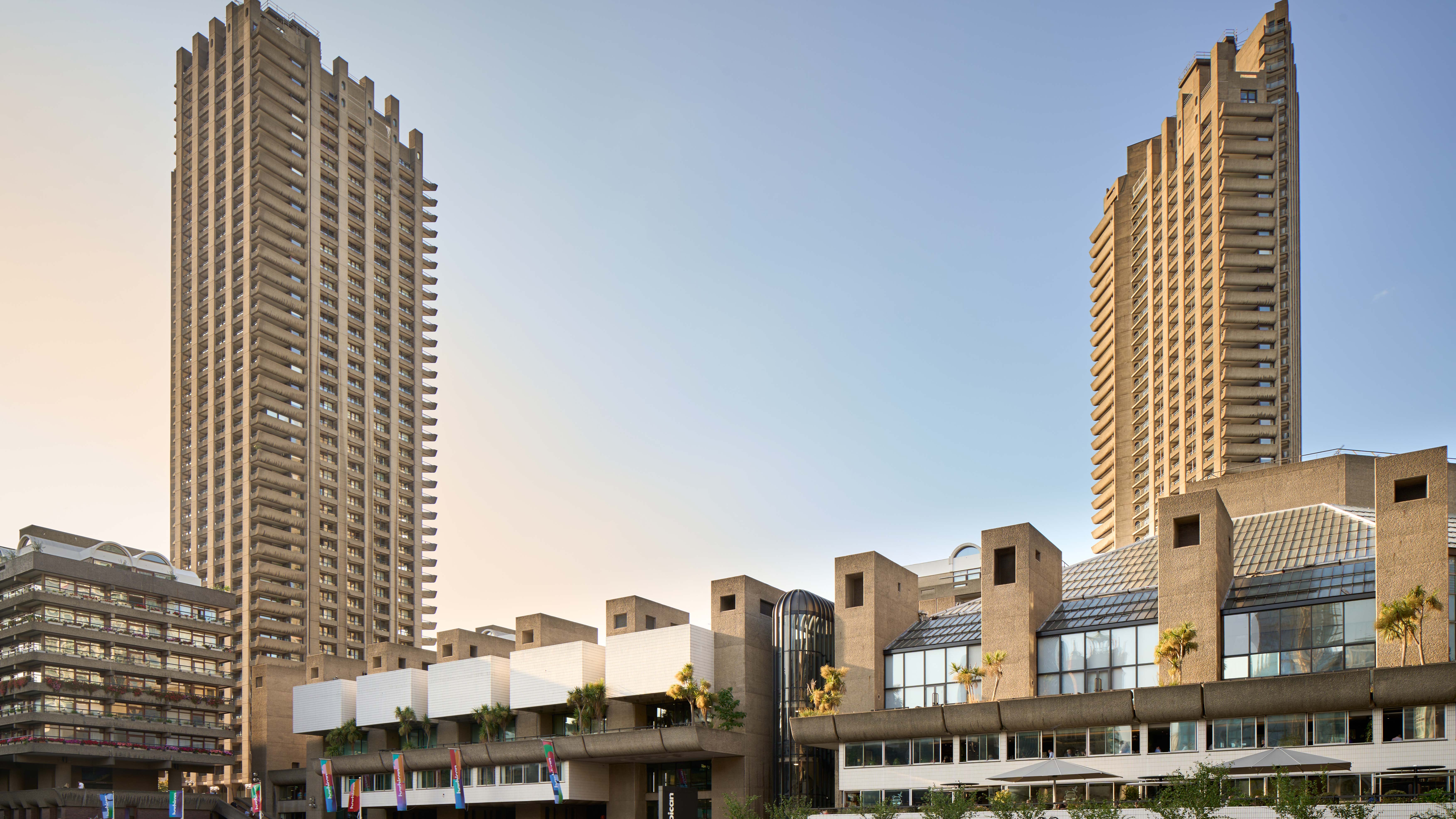 The Barbican as muse: composer Shiva Feshareki on bringing the brutalist icon to life through music
The Barbican as muse: composer Shiva Feshareki on bringing the brutalist icon to life through musicFor the last two years, British-Iranian experimental composer and turntablist Shiva Feshareki has been drawing on the Barbican’s hidden history as a gateway for her new piece. She talks to Wallpaper* about her Brutalist muse
By El Hunt
-
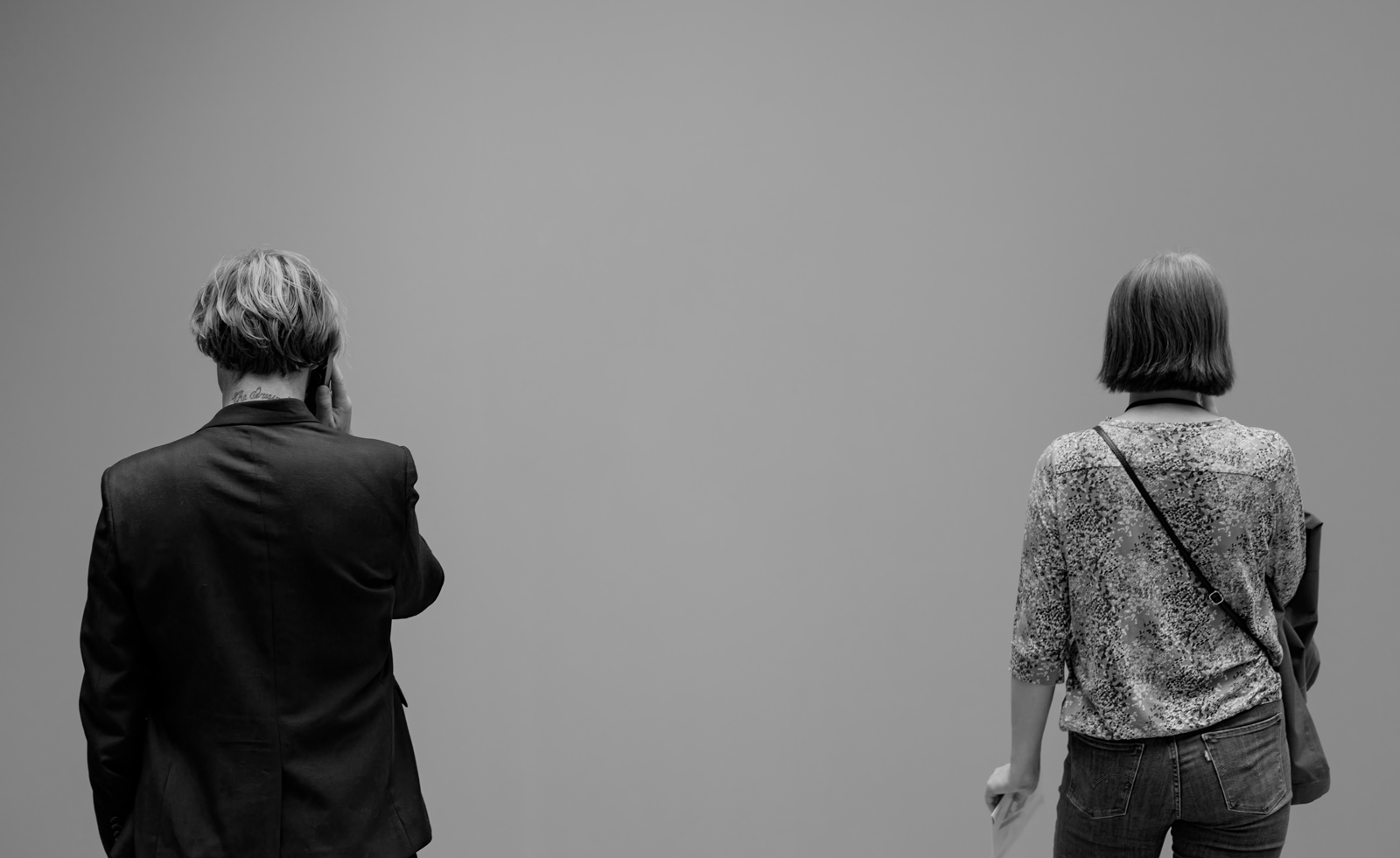 Looking at people looking at art: inside the mind of a gallery attendant
Looking at people looking at art: inside the mind of a gallery attendantVisitor experience workers at London’s Tate Modern, Serpentine, Barbican and V&A share what it’s like to watch people looking at art during a time of changing attention spans and rising vandalism
By Kyle MacNeill
-
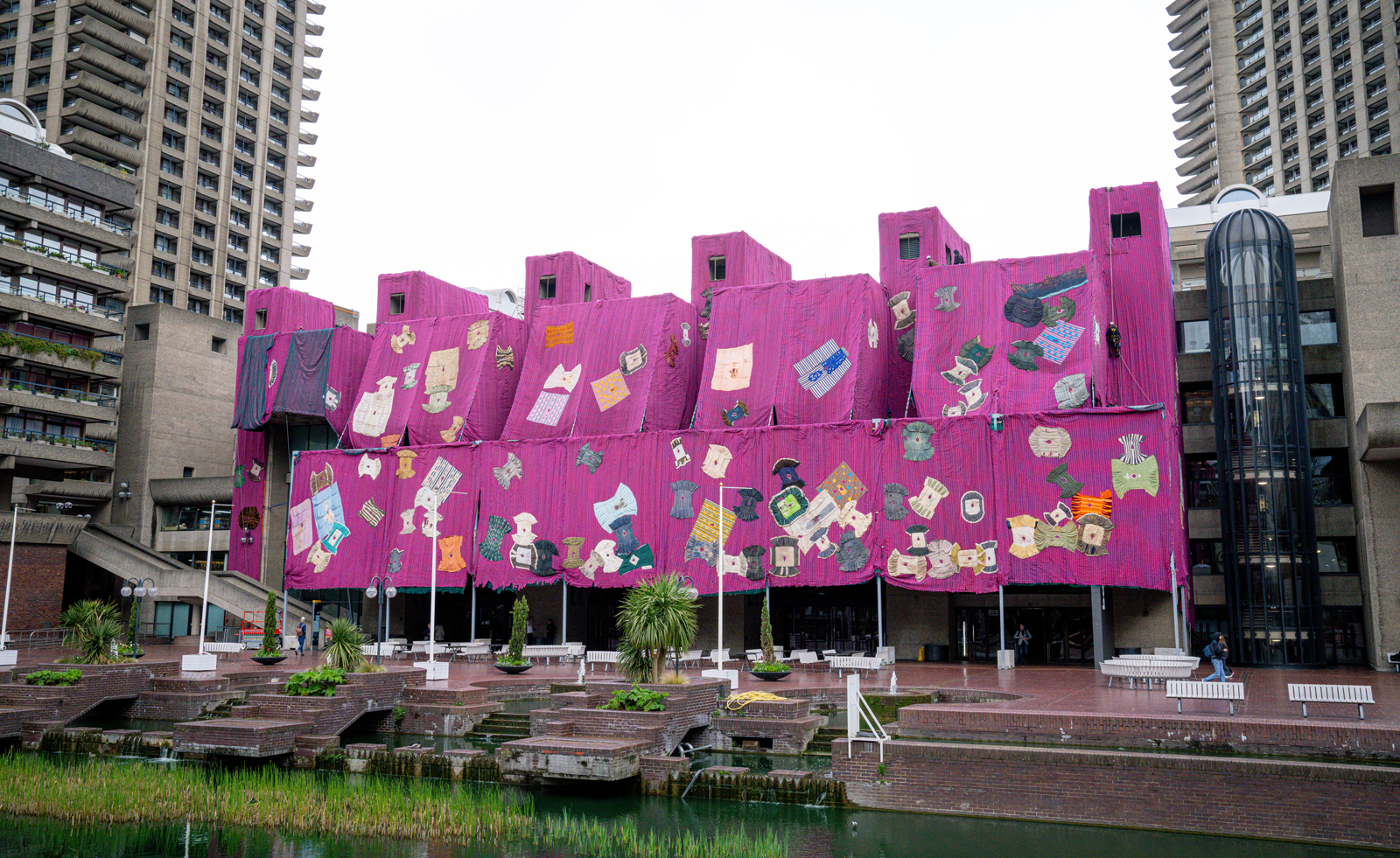 Ibrahim Mahama tells us why he has covered the Barbican in pink fabric
Ibrahim Mahama tells us why he has covered the Barbican in pink fabricIbrahim Mahama's 'Purple Hibiscus' has transformed the Barbican’s Lakeside Terrace
By Hannah Silver
-
 Politics, protest and potential: the Barbican explores the power of textiles in art
Politics, protest and potential: the Barbican explores the power of textiles in artUnravel: The Power and Politics of Textiles in Art’ at the Barbican Centre in London explores how far the medium has evolved in the last sixty years
By Emily Steer
-
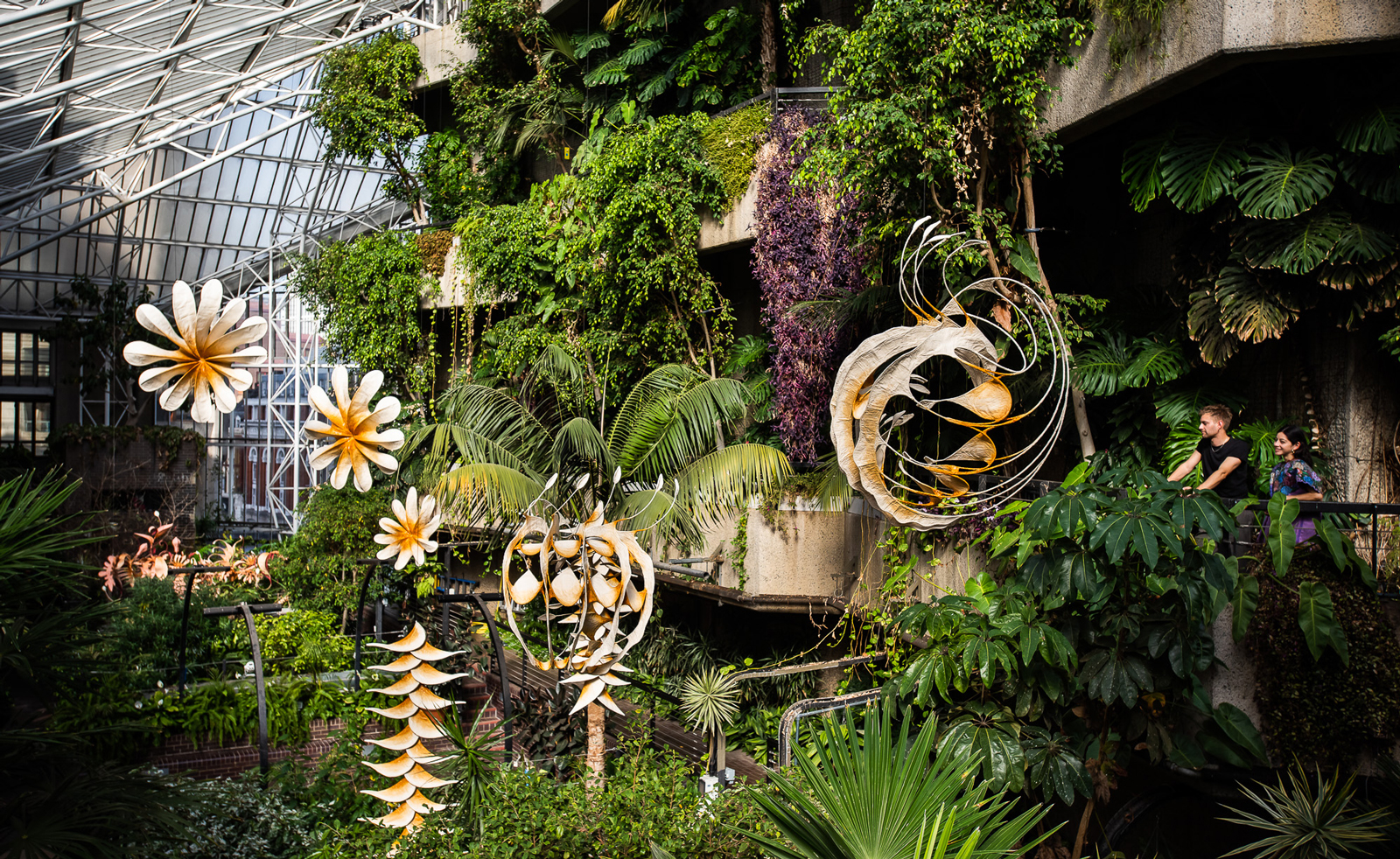 Ranjani Shettar’s site-specific sculptures unveiled in Barbican Conservatory
Ranjani Shettar’s site-specific sculptures unveiled in Barbican ConservatoryRanjani Shettar’s ‘Cloud songs on the horizon’ suspends sculptures amid the Barbican Conservatory’s plant life
By Francesca Perry
-
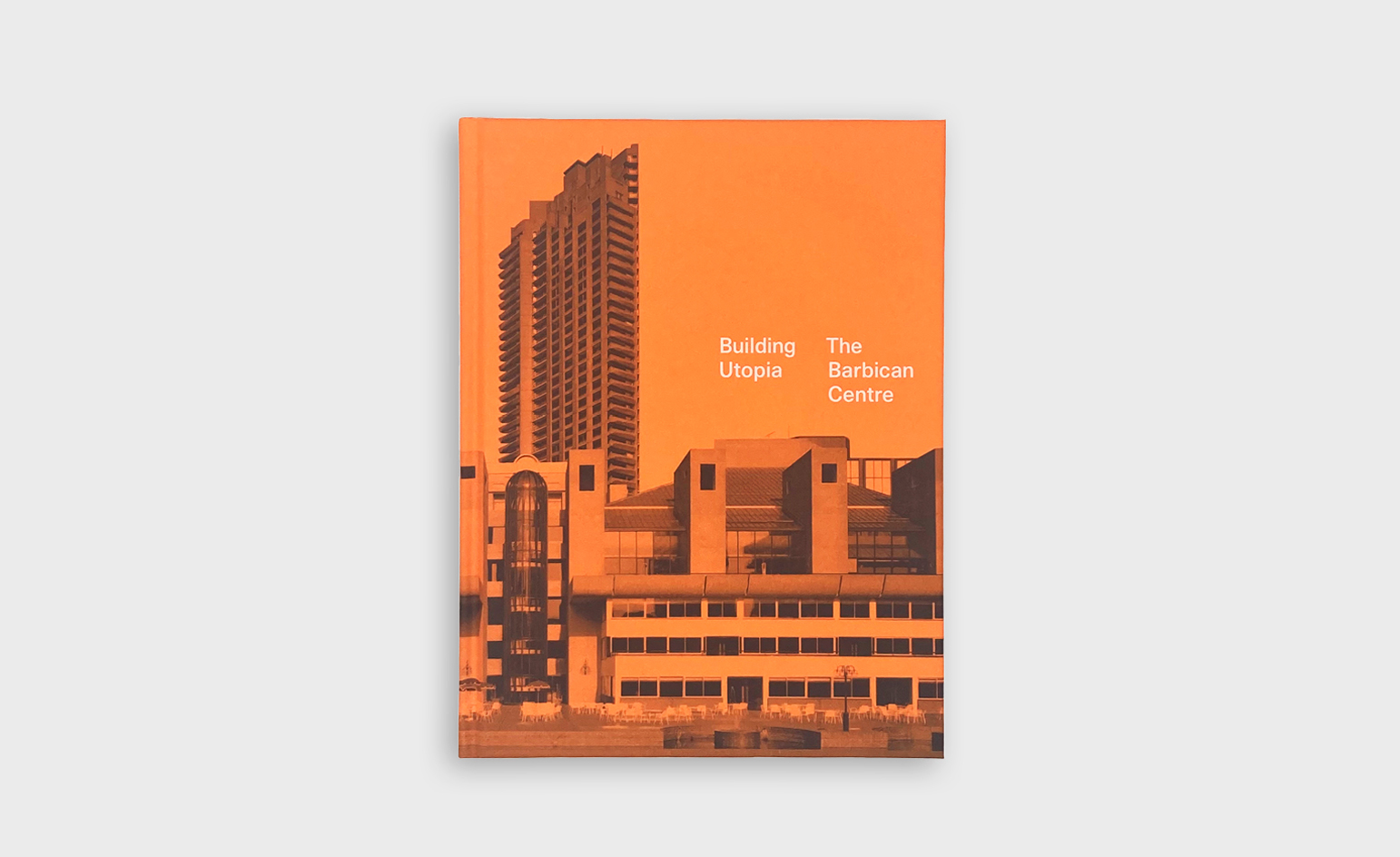 Forty years of the Barbican Centre: an art utopia made concrete
Forty years of the Barbican Centre: an art utopia made concreteBuilding Utopia: The Barbican Centre, published to coincide with the institution’s 40th anniversary, explores the birth of the Barbican, its storied history and its unparalleled impact on contemporary arts and culture
By Harriet Lloyd-Smith
-
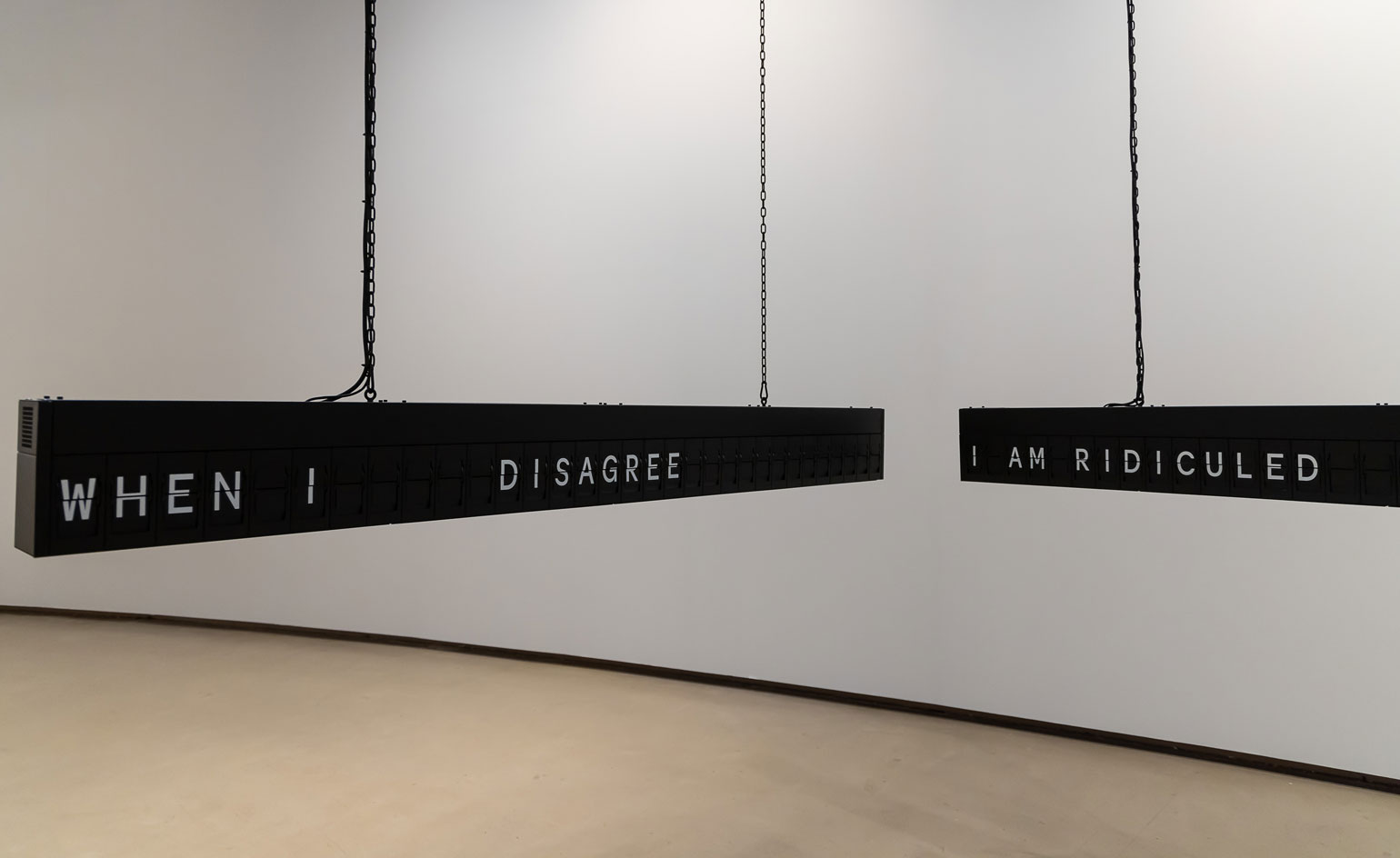 Shilpa Gupta at the Barbican: social injustice, censorship and poetry
Shilpa Gupta at the Barbican: social injustice, censorship and poetryIn the multipart show ‘Sun at Night’ at London’s Barbican, Mumbai-based artist Shilpa Gupta highlights the fragility of free expression and gives a voice to those silenced
By Cleo Roberts-Komireddi
-
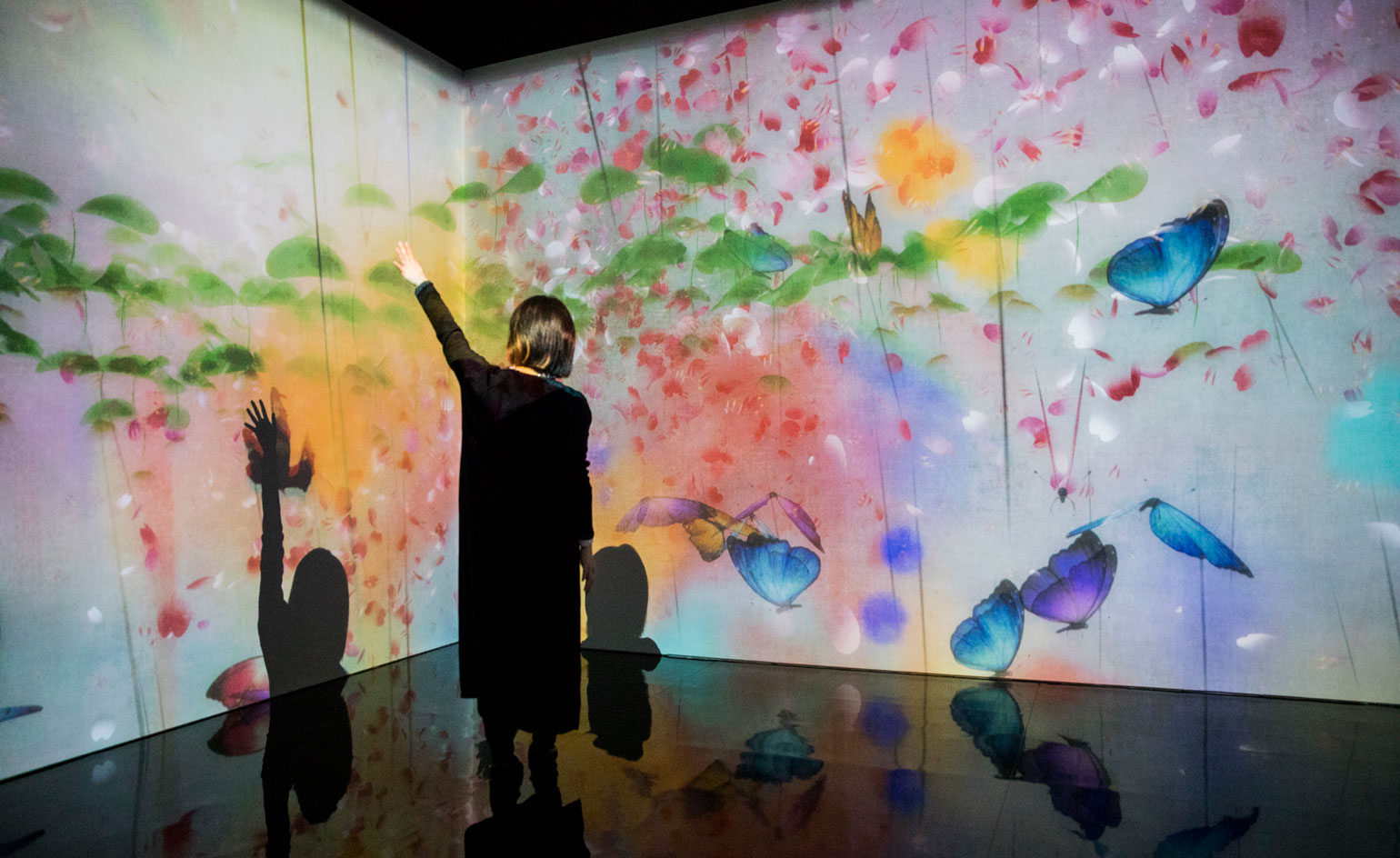 The nuances of AI dissected at London's Barbican Centre
The nuances of AI dissected at London's Barbican CentreBy Nick Compton